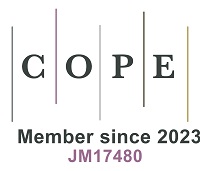REFERENCES
2. Ogunbode CA, Doran R, Böhm G. Exposure to the IPCC special report on 1.5 °C global warming is linked to perceived threat and increased concern about climate change. Clim Change 2020;158:361-75.
3. Lin J, Tong D, Davis S, et al. Global climate forcing of aerosols embodied in international trade. Nat Geosci 2016;9:790-4.
4. Zhang Q, Jiang X, Tong D, et al. Transboundary health impacts of transported global air pollution and international trade. Nature 2017;543:705-9.
5. Hinnells M. Technologies to achieve demand reduction and microgeneration in buildings. Energy Policy 2008;36:4427-33.
6. Nejat P, Jomehzadeh F, Taheri MM, Gohari M, Abd Majid MZ. A global review of energy consumption, CO2 emissions and policy in the residential sector (with an overview of the top ten CO2 emitting countries). Renew Sustain Energy Rev 2015;43:843-62.
7. Zhang M, Kafy A-A, Xiao P, et al. Impact of urban expansion on land surface temperature and carbon emissions using machine learning algorithms in Wuhan, China. Urban Clim 2023;47:101347.
8. Wang X, Chen S. Urban-rural carbon footprint disparity across China from essential household expenditure: survey-based analysis, 2010-2014. J Environ Manag 2020;267:110570.
9. Zhang M, Zhang Z, Tong B, Ren B, Zhang L, Lin X. Analysis of the coupling characteristics of land transfer and carbon emissions and its influencing factors: a case study of China. Front Environ Sci 2023;10:1105552.
10. Song C, Zhang Z, Xu W, Elshkaki A. The spatial effect of industrial transfer on carbon emissions under firm location decision: a carbon neutrality perspective. J Environ Manag 2023;330:117139.
11. Li X. Pathways to mitigate household carbon emissions in Chinese cities: intentions, actions, and environments. Urban Clim 2024;55:101953.
12. Gifford R. Psychology’s essential role in alleviating the impacts of climate change. Can J Psychol 2008;49:273-80.
13. Steg L, Vlek C. Encouraging pro-environmental behaviour: an integrative review and research agenda. J Environ Psychol 2009;29:309-17.
15. Rees WE. Ecological footprints and appropriated carrying capacity: what urban economics leaves out. Environ Urban 1992;4:121-30.
16. Wackernagel M, Lewan L, Hansson CB. Evaluating the use of natural capital with the ecological footprint: applications in Sweden and subregions. Ambio 1999;28:604-12. Available from: https://www.jstor.org/stable/4314966 [Last accessed on 20 Jun 2024]
17. Weidema BP, Thrane M, Christensen P, Schmidt J, Løkke S. Carbon footprint: a catalyst for life cycle assessment? J Ind Ecol 2008;12:3-6.
18. Wiedmann T. Editorial: carbon footprint and input-output analysis - an introduction. Econ Syst Res 2009;21:175-86.
19. Wood R, Garnett S. Regional sustainability in Northern Australia - a quantitative assessment of social, economic and environmental impacts. Ecol Econ 2010;69:1877-82.
20. Ivanova D, Wood R. The unequal distribution of household carbon footprints in Europe and its link to sustainability. Glob Sustain 2020;3:e18.
21. Wiedenhofer D, Guan D, Liu Z, Meng J, Zhang N, Wei Y. Unequal household carbon footprints in China. Nat Clim Change 2017;7:75-80.
22. Osorio P, Tobarra MÁ, Tomás M. Are there gender differences in household carbon footprints? Evidence from Spain. Ecol Econ 2024;219:108130.
23. Pang M, Meirelles J, Moreau V, Binder C. Urban carbon footprints: a consumption-based approach for Swiss households. Environ Res Commun 2020;2:011003.
24. Schleich J, Dütschke E, Kanberger E, Ziegler A. On the relationship between individual carbon literacy and carbon footprint components. Ecol Econ 2024;218:108100.
25. Ottelin J, Heinonen J, Nässén J, Junnila S. Household carbon footprint patterns by the degree of urbanisation in Europe. Environ Res Lett 2019;14:114016.
26. Yu F, Dong H, Geng Y, Fang AS, Li H. Uncovering the differences of household carbon footprints and driving forces between China and Japan. Energy Policy 2022;165:112990.
27. Zhang X, Wang Y. How to reduce household carbon emissions: a review of experience and policy design considerations. Energy Policy 2017;102:116-24.
28. Fang K, Song S, Heijungs R, et al. The footprint’s fingerprint: on the classification of the footprint family. Curr Opin Environ Sustain 2016;23:54-62.
29. Fang K, Heijungs R, de Snoo GR. Theoretical exploration for the combination of the ecological, energy, carbon, and water footprints: overview of a footprint family. Ecol Indic 2014;36:508-18.
30. Wackernagel M, Rees W. Our ecological footprint: reducing human impact on the earth. 1997. Available from: https://escholarship.org/content/qt7730w81q/qt7730w81q.pdf?t=q9ns62 [Last accessed on 20 Jun 2024].
31. Finkbeiner M. Carbon footprinting-opportunities and threats. Int J Life Cycle Assess 2009;14:91-4.
33. Matthews HS, Hendrickson CT, Weber CL. The importance of carbon footprint estimation boundaries. Environ Sci Technol 2008;42:5839-42.
34. Wiedmann T, Minx J. A definition of ‘carbon footprint’. In: Ecological economics research trends. New York: Nova Science Publishers; 2008. pp 1-11.
35. Peters GP. Carbon footprints and embodied carbon at multiple scales. Curr Opin Environ Sustain 2010;2:245-50.
36. Wiedmann TO, Lenzen M, Barrett JR. Companies on the scale: comparing and benchmarking the sustainability performance of businesses. J Ind Ecol 2009;13:361-83.
37. Huang YA, Lenzen M, Weber CL, Murray J, Matthews HS. The role of input-output analysis for the screening of corporate carbon footprints. Econ Syst Res 2009;21:217-42.
38. Shang W, Chen Y, Yu Q, et al. Spatio-temporal analysis of carbon footprints for urban public transport systems based on smart card data. Appl Energy 2023;352:121859.
39. Kanemoto K, Moran D, Hertwich EG. Mapping the carbon footprint of nations. Environ Sci Technol 2016;50:10512-7.
40. Tukker A, Pollitt H, Henkemans M. Consumption-based carbon accounting: sense and sensibility. Climate Policy 2020;20:S1-13.
41. Pottier A. Expenditure elasticity and income elasticity of GHG emissions: a survey of literature on household carbon footprint. Ecol Econ 2022;192:107251.
42. Wiedmann TO, Chen G, Barrett J. The concept of city carbon maps: a case study of Melbourne, Australia. J Ind Ecol 2016;20:676-91.
43. Perobelli FS, Faria WR, Vale VDA. The increase in Brazilian household income and its impact on CO2 emissions: evidence for 2003 and 2009 from input-output tables. Energy Econ 2015;52:228-39.
44. Seriño MNV, Klasen S. Estimation and determinants of the Philippines' household carbon footprint. Dev Econ 2015;53:44-62.
45. Steen-Olsen K, Wood R, Hertwich EG. The carbon footprint of norwegian household consumption 1999-2012. J Ind Ecol 2016;20:582-92.
46. Druckman A, Jackson T. The carbon footprint of UK households 1990-2004: a socio-economically disaggregated, quasi-multi-regional input-output model. Ecol Econ 2009;68:2066-77.
47. Starr J, Nicolson C, Ash M, Markowitz EM, Moran D. Assessing U.S. consumers' carbon footprints reveals outsized impact of the top 1%. Ecol Econ 2023;205:107698.
48. Ma X, Du J, Zhang M, Ye Y. Indirect carbon emissions from household consumption between China and the USA: based on an input-output model. Nat Hazards 2016;84:399-410.
49. Choi T. Understanding environmental responsibility of cities and emissions embodied in trade. Econ Syst Res 2015;27:133-53.
50. Bachmann C, Kennedy C, Roorda MJ. Applications of random-utility-based multi-region input-output models of transport and the spatial economy. Transport Rev 2014;34:418-40.
51. Sommer M, Kratena K. The carbon footprint of European households and income distribution. Ecol Econ 2017;136:62-72.
52. Yao L, Liu JR, Wang RS. Comparison and analysis of carbon emissions embodied in household consumption between urban and rural area of China. Chin J Popul Resour 2011;21:25-9. Available from: http://www.zgrz.cbpt.cnki.net/WKC/WebPublication/paperDigest.aspx?paperID=efdc19a9-77db-4640-a623-b265728137c0 [Last accessed on 21 Jun 2024]
53. Trainer T. A critical analysis of the 2014 IPCC report on capital cost of mitigation and of renewable energy. Energy Policy 2017;104:214-20.
54. ISO 14040:2006. Environmental management - life cycle assessment - principles and framework. Available from: https://www.iso.org/standard/37456.html [Last accessed on 20 Jun 2024].
55. Specification PA. Specification for the assessment of the life cycle greenhouse gas emissions of goods and services. Bsi Br Stand Isbn 2008;978:580.
56. Bin S, Dowlatabadi H. Consumer lifestyle approach to US energy use and the related CO2 emissions. Energy Policy 2005;33:197-208.
57. Chen C, Liu G, Meng F, Hao Y, Zhang Y, Casazza M. Energy consumption and carbon footprint accounting of urban and rural residents in Beijing through consumer lifestyle approach. Ecol Indic 2019;98:575-86.
58. Liu Z, Guan D, Wei W, et al. Reduced carbon emission estimates from fossil fuel combustion and cement production in China. Nature 2015;524:335-8.
59. Gao X, Chen X, Liu L. Exploring the determinants of the evolution of urban and rural household carbon footprints inequality in China. Energy Policy 2024;185:113955.
60. Lv J, Liu B, Chai L. Comparing the determinants of household carbon footprints between rural and urban: evidence from China household survey data. China Agr Econ Rev 2024;16:154-80.
61. Zhang Z, Cui Y, Zhang Z. Unequal age-based household carbon footprint in China. Clim Policy 2023;23:577-92.
62. An N, Huang C, Shen Y, et al. Efficient data-driven prediction of household carbon footprint in China with limited features. Energy Policy 2024;185:113926.
63. Liu L, Xu L, Wang S, Tian X. The transition patterns of rural household carbon footprint in China. Resour Environ Sustain 2023;13:100122.
64. Kanemoto K, Moran D, Shigetomi Y, Reynolds C, Kondo Y. Meat consumption does not explain differences in household food carbon footprints in Japan. One Earth 2019;1:464-71.
65. Zen IS, Al-Amin AQ, Alam M, Doberstein B. Magnitudes of households’ carbon footprint in Iskandar Malaysia: policy implications for sustainable development. J Clean Prod 2021;315:128042.
66. Seriño MNV. Rising carbon footprint inequality in the Philippines. Environ Econ Policy Stud 2020;22:173-95.
67. Mi Z, Zheng J, Meng J, et al. Economic development and converging household carbon footprints in China. Nat Sustain 2020;3:529-37.
68. Dreyer LC, Niemann AL, Hauschild MZ. Comparison of three different LCIA methods: EDIP97, CML2001 and eco-indicator 99: does it matter which one you choose? Int J Life Cycle Assess 2003;8:191-200.
69. Steen B. A Systematic approach to environmental priority strategies in product development (Eps). Version 2000 - General system characteristics. 1994. Available from: https://citeseerx.ist.psu.edu/document?repid=rep1&type=pdf&doi=e5fb278678a8e84984e384bf5929dafc74e7adeb [Last accessed on 21 Jun 2024]
70. Toffoletto L, Bulle C, Godin J, Reid C, Deschênes L. LUCAS - a new LCIA method used for a Canadian-specific context. Int J Life Cycle Assess 2007;12:93-102.
71. Bare JC. Traci: the tool for the reduction and assessment of chemical and other environmental impacts. J Ind Ecol 2002;6:49-78.
72. Jolliet O, Margni M, Charles R, et al. IMPACT 2002+: a new life cycle impact assessment methodology. Int J Life Cycle Assess 2003;8:324-30.
73. Owsianiak M, Laurent A, Bjørn A, Hauschild MZ. IMPACT 2002+, ReCiPe 2008 and ILCD’s recommended practice for characterization modelling in life cycle impact assessment: a case study-based comparison. Int J Life Cycle Assess 2014;19:1007-21.








